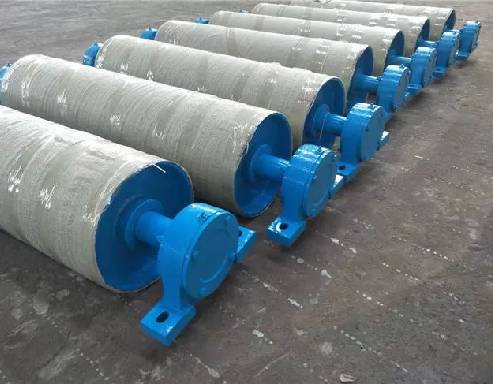 Afrikaans
Afrikaans  Albanian
Albanian  Amharic
Amharic  Arabic
Arabic  Armenian
Armenian  Azerbaijani
Azerbaijani  Basque
Basque  Belarusian
Belarusian  Bengali
Bengali  Bosnian
Bosnian  Bulgarian
Bulgarian  Catalan
Catalan  Cebuano
Cebuano  Corsican
Corsican  Croatian
Croatian  Czech
Czech  Danish
Danish  Dutch
Dutch  English
English  Esperanto
Esperanto  Estonian
Estonian  Finnish
Finnish  French
French  Frisian
Frisian  Galician
Galician  Georgian
Georgian  German
German  Greek
Greek  Gujarati
Gujarati  Haitian Creole
Haitian Creole  hausa
hausa  hawaiian
hawaiian  Hebrew
Hebrew  Hindi
Hindi  Miao
Miao  Hungarian
Hungarian  Icelandic
Icelandic  igbo
igbo  Indonesian
Indonesian  irish
irish  Italian
Italian  Japanese
Japanese  Javanese
Javanese  Kannada
Kannada  kazakh
kazakh  Khmer
Khmer  Rwandese
Rwandese  Korean
Korean  Kurdish
Kurdish  Kyrgyz
Kyrgyz  Lao
Lao  Latin
Latin  Latvian
Latvian  Lithuanian
Lithuanian  Luxembourgish
Luxembourgish  Macedonian
Macedonian  Malgashi
Malgashi  Malay
Malay  Malayalam
Malayalam  Maltese
Maltese  Maori
Maori  Marathi
Marathi  Mongolian
Mongolian  Myanmar
Myanmar  Nepali
Nepali  Norwegian
Norwegian  Norwegian
Norwegian  Occitan
Occitan  Pashto
Pashto  Persian
Persian  Polish
Polish  Portuguese
Portuguese  Punjabi
Punjabi  Romanian
Romanian  Russian
Russian  Samoan
Samoan  Scottish Gaelic
Scottish Gaelic  Serbian
Serbian  Sesotho
Sesotho  Shona
Shona  Sindhi
Sindhi  Sinhala
Sinhala  Slovak
Slovak  Slovenian
Slovenian  Somali
Somali  Spanish
Spanish  Sundanese
Sundanese  Swahili
Swahili  Swedish
Swedish  Tagalog
Tagalog  Tajik
Tajik  Tamil
Tamil  Tatar
Tatar  Telugu
Telugu  Thai
Thai  Turkish
Turkish  Turkmen
Turkmen  Ukrainian
Ukrainian  Urdu
Urdu  Uighur
Uighur  Uzbek
Uzbek  Vietnamese
Vietnamese  Welsh
Welsh  Bantu
Bantu  Yiddish
Yiddish  Yoruba
Yoruba  Zulu
Zulu conveyor pulley catalogue
Understanding the Fundamentals of Conveyor Pulley Catalogues
In the realm of material handling and transportation, conveyor systems play a pivotal role across various industries, from manufacturing to logistics. At the heart of these systems lies a critical component the conveyor pulley. A well-structured conveyor pulley catalogue serves as an essential resource for engineers, maintenance personnel, and procurement specialists, offering detailed information on available products, specifications, and applications.
What is a Conveyor Pulley?
A conveyor pulley is a mechanical device used to transfer power to the conveyor belt, ensuring the movement of materials from one point to another. These pulleys are crucial for the functionality and efficiency of conveyor systems. Typically made from durable materials such as steel or aluminum, they come in various types, including drive pulleys, idler pulleys, and tail pulleys, each serving a specific purpose within the conveyor setup.
The Importance of a Conveyor Pulley Catalogue
A comprehensive conveyor pulley catalogue is indispensable for understanding the wide array of options available in the market. It systematically lists the different types of pulleys, their dimensions, material specifications, load capacities, and other critical attributes. This allows users to make informed decisions based on their unique needs.
Key Components of a Conveyor Pulley Catalogue
1. Product Specifications Each item in the catalogue is typically accompanied by detailed specifications, including the diameter, width, and weight of the pulley. Materials and construction details are also provided, enabling users to choose pulleys that can withstand their operational environment.
conveyor pulley catalogue

2. Load Capacities A fundamental consideration when selecting a conveyor pulley is its load capacity. The catalogue should specify the maximum load each pulley can handle, ensuring that it aligns with the operational demands of the conveyor system.
3. Types of Pulleys Conveyor pulleys come in various configurations. The catalogue should clearly differentiate between drive pulleys (which control the movement of the belt), idler pulleys (which support the belt without driving it), and tail pulleys (found at the end of the conveyor system). Understanding these differences is crucial for proper replacement and maintenance.
4. Applications The ideal catalogue will also provide information on suitable applications for each type of pulley, catering to industries such as mining, agriculture, packaging, and food processing. Different sectors may have specific requirements based on environmental factors, load types, and operational speeds.
5. Installation and Maintenance Guidelines Alongside the product specifications, a good catalogue often includes installation and maintenance tips. This information is vital for ensuring the longevity and optimal performance of conveyor pulleys.
6. Visual Aids Diagrams and photographs can greatly enhance the comprehension of different pulley types and their configurations. Visual representations help users quickly identify the pulleys they need.
Conclusion
As industries continue to advance and evolve, the importance of efficient material handling systems cannot be overstated. A well-organized conveyor pulley catalogue serves not only as a vital resource but also as a guide for professionals in selecting the appropriate components for their specific operational needs. By providing a clear overview of available products, their specifications, and recommended applications, a conveyor pulley catalogue plays a significant role in ensuring the reliability and efficiency of conveyor systems. Understanding and utilizing such resources is paramount for maximizing productivity and minimizing downtime in today’s competitive business landscape.
-
Revolutionizing Conveyor Reliability with Advanced Rubber Lagging PulleysNewsJul.22,2025
-
Powering Precision and Durability with Expert Manufacturers of Conveyor ComponentsNewsJul.22,2025
-
Optimizing Conveyor Systems with Advanced Conveyor AccessoriesNewsJul.22,2025
-
Maximize Conveyor Efficiency with Quality Conveyor Idler PulleysNewsJul.22,2025
-
Future-Proof Your Conveyor System with High-Performance Polyurethane RollerNewsJul.22,2025
-
Driving Efficiency Forward with Quality Idlers and RollersNewsJul.22,2025





























